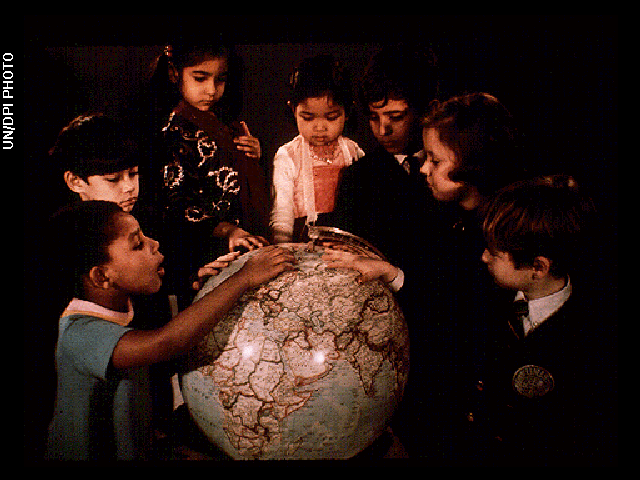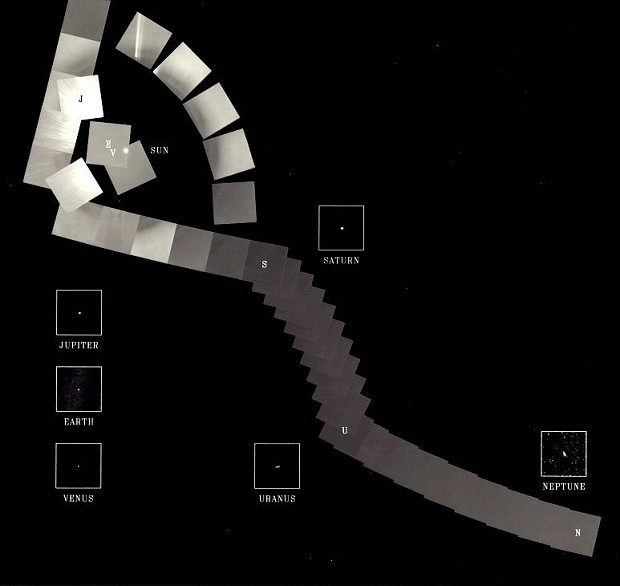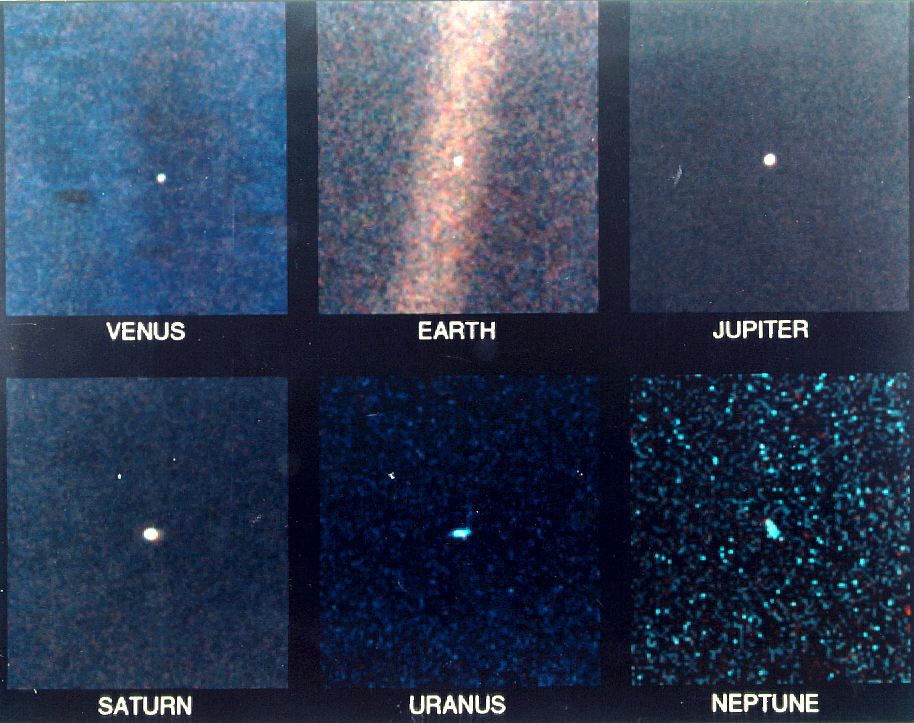The farthest human-made object is also the fastest human-made object, Voyager 1.
Cast into space on 5 September 1977, from Space Launch Complex 41 at Cape Canaveral, Florida. Mounted on a Titan IIIE/Centaur launch vehicle, Voyager 1 is now the farthest human-made object from Earth. It takes light about 16 hours and 10 minutes to reach Earth From Voyager-1. It is also travelling away from both the Earth and the Sun at a relative speed faster than any human-made object, at a velocity of 61,400 km/h.
At current velocity and trajectory Voyager-1 will arrive at Proxima Centaur in 73,600 years on the way and in about 40,000 years it will pass to about 1.6 light years of the Star AC+79 3888 in the constellation Camelopardalis. At current velocity it takes Voyager-1 14,000 years to travel one light year.
The current distance Voyager-1 is calculated in realtime from NASA here.
Message In A Bottle
If per chance future explorers discover Voyager-1, there is a “message in a bottle” that humanity has cast hopefully in to space, the Voyager Golden Record.
Attached to the outer body of Voyager-1 is a Gold Record Disc as a notice to the future. Created before the era of the personal computer, the best minds at NASA encoded on the disk 115 images and a variety of natural sounds, such as those made by surf, wind and thunder, birds, whales, and other animals, 90-minute selection of music including both Eastern and Western classics and a variety of ethnic musical selections, and spoken greetings from Earth-people in fifty five languages.
“Dark was the night” by Blind Willie Johnson
The record contains spoken greetings, in Akkadian, which was spoken in Sumer about six thousand years ago, and ending with Wu, a modern Chinese dialect.
Greetings in fifty five languages.
The record is encased in a protective aluminium jacket, together with a cartridge and a needle. Instructions, in symbolic language, explain the origin of the spacecraft and indicate how the record is to be played. The 115 images are encoded in analogue format. The remainder of the record is in analogue audio, designed to be played at 16-2/3 revolutions per minute.

A Hopeful Image Encoded On Voyager 1’s Record
1970’s NASA Technology, Still Working
Voyager-1 is still operational even with its 1970s era technology. Most of the experiments have been disabled. The radioactive power plant is scheduled to continue producing power for at least another 5 years, but it could well last another decade.
Voyager-1 still sends back data to the 3 tracking facilities just to let us know the tiny transmitter is still operational. The Voyager Interstellar Mission is currently funded for the next few years.
Voyager 1’s Valentine Gift To Humanity, The Family Portrait
On 14 February 1990, Voyager 1, on its way out of the Solar System, turned back around one last time and took 60 pictures from a distance of about 6.4 billion kilometres with a camera that is far less powerful than one found in even the most modest cell phone. Each individual pixel took five painstaking hours to arrive at Earth. I think this may be one of the most powerful images in human history.

Family Portrait Showing The 60 Frames


Individual Frames Of The Family Portrait Showing Each Planet From 4 billion Miles Away
A 6.4 Billion Kilometre Perspective
Voyager-1 is our family’s most intrepid explorer, extending our journey over the largest mountain we have thus far scaled, sending back news and tales of its very long and lonely trek.
From 6.4 billion kilometres away the inner planets are huddled around the Sun for warmth much like how our ancient family found refuge at a camp fire at night. From 6.4 billion kilometres away Voyager 1 cannot detect any of the differences between water and land, country lines or cultural lines nor can it detect the marginal differences of the entirety of the human population of Earth and its other inhabitants. From 6.4 billion kilometres away, not only our planet, but the entire Solar System looks like one extended family making its way through the dark.
If through human, non human or natural processes, humanity does not survive, our space probes like Voyager-1 will stand as a testament for millions of years making one very profound statement:
For at least one moment in our short history we overcame astounding obstacles and almost insurmountable odds, and projected our inherent curiosity and need for discovery into the universe.
We were here.
About the author:Brian Roemmele, Alchemist & Metaphysician
What is the farthest human-made object? originally appeared on Quora.
Images via NASA
